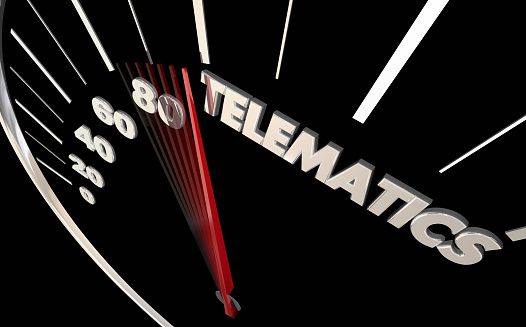
Fleet managers from companies of all sizes use fleet cards to consolidate fuel, capitalize on rebates and automate fuel expense tracking. These are great reasons to add a fleet fuel card to your toolbox. There is a huge advantage fuel cards offer business owners and fleet managers that is often overlooked. When you combine the power of a fleet card with telematics, you can train better drivers.
It can be argued that a fleet’s most valuable asset is its drivers. They can make or break a business because their driving habits determine fuel economy, vehicle wear, maintenance needs and more. A robust driver training program is essential for any fleet. Safe and efficient driving enhances drivers’ wellbeing, protects the fleet’s reputation, promotes greater profitability and lowers driver turnover rates.
Let’s look at what fleet cards and telematics can offer a company looking to train better drivers.
By targeting fuel-inefficient behaviors like speeding and idling, telematics can reduce fuel costs and improve overall fleet safety.
Advantages of Fleet Cards for Driver Training
When talking about driver training, it’s easy to focus on the physical aspects of driving. But a good employee is someone who understands all facets of their job. Your drivers certainly need to deliver loads efficiently and safely, but how they manage finances should be a foundational piece of driver training.
Fleet cards on their own offer some features that can help with driver training, specifically regarding expense management. Most fleet cards track all expense data in real time, meaning certain metrics are available at any time. Fleet managers can monitor drivers’ spending habits, and with the purchase controls of a fleet card, they can set spending parameters to help employees adhere to fuel spending policies. These parameters include:
- Daily, weekly or monthly spending limits.
- Volume (gallons of fuel) limits.
- Number of transactions allowed in a given time frame.
- Usage by time of day or day of week.
- Transaction type (fuel only vs. fuel and maintenance).
- Fuel type (regular, premium, diesel).
Clear expectations with some guardrails to spending make a difference in accountability. Since all transaction data is collected as purchases happen, you can view when a transaction is made, where it happened and what was purchased. All this information is logged in the fleet card dashboard.
Telematics and Driver Training

Many fleet managers and business owners use telematics to monitor vehicles, but this tool is perfectly suited to help train drivers. Telematics uses global positioning systems (GPS) and vehicle diagnostics in tandem. The result is some insightful driver and vehicle data. Using telematics, you can track the following:
- Vehicle’s current speed
- Vehicle’s average speed
- Drive time
- Odometer readings
- Fuel economy (miles per gallon [MPG])
- Driving patterns
- Aggressive braking or driving
- Idle times
Many fleet managers and business owners use telematics to monitor vehicles, but this tool is perfectly suited to help train drivers.
All information is tracked in real time and reported to the fleet card dashboard. You can even view the data from your mobile devices.
Identifying High-Risk Drivers with Telematics
With this information, fleet managers can train drivers to operate company vehicles within specific speed parameters. They can also be on the lookout for excessive idle times, aggressive driving and unnecessary miles. By monitoring and flagging potentially unsafe driving patterns, fleet managers can:
Create Awareness
By tracking and sharing data, you create a culture of awareness within your fleet. Regular discussions based on this data create coaching opportunities and emphasize safety.
Promote Coaching and Collaboration
A culture of safety requires involvement from the entire fleet. Feedback should be a two-way street, with management receiving insights from drivers. With real-time data and driver feedback, fleet managers can work in tandem with drivers.
Provide Specific Feedback
Specific feedback is more valuable than general critiques. Drivers should be engaged in constructive conversations that identify problem areas and seek solutions. With telematics, managers have the data necessary to hold drivers accountable and highlight the positive impacts employees make on the fleet.
The Powerful Combo of Fleet Cards and Telematics
Most fleet cards can seamlessly integrate telematics data into the fleet card dashboard. Doing so gives fleet managers and business owners all their fleet information in one place. With the ability to run standard or customized reports for drivers, you can provide real-time feedback around a driver’s impact on safety and finances.
Using telematics and fleet cards for driver training, you effectively manage your fleet in four ways.
Improve Fleet Safety
Real-time alerts help drivers correct risky behavior immediately and provide specific information for ongoing coaching or interventions.
Reduce Driver Turnover
Telematics and fleet cards allow managers to create personalized training programs addressing individual driver needs. Prioritizing drivers’ needs can increase job satisfaction, reducing the need for costly hiring and training new drivers.
Reduce Fleet Costs
Managers can reduce fuel costs by targeting inefficient behaviors like speeding and idling. Safe driving also puts less strain on brakes, engines and transmissions, which means fewer repairs. Purchase parameters train drivers to monitor spending habits.
Increase Driver Motivation
With driver-specific data and robust reporting, fleet managers can recognize top-performing drivers. Promoting friendly competition can motivate all drivers to improve their performance.
Safe Driving is Good for Your Bottom Line
Fleet card information combined with telematics data is a great foundation for training drivers. By ensuring your employees are safe on the road, you extend the life of your vehicles, reduce fuel consumption and add to your company’s bottom line.